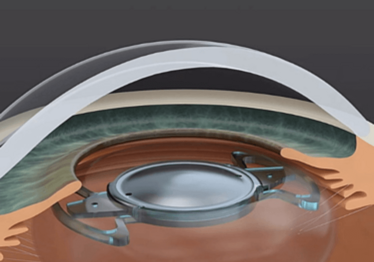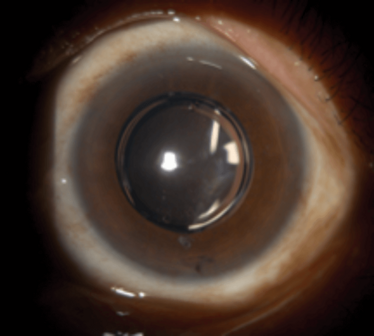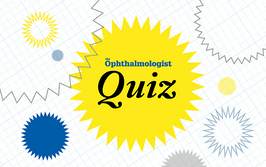Building Blocks
How modular technologies hold the promise of perfect vision for patients

Being human, we don’t always achieve perfection. And even when we do achieve surgical perfection, a significant number of patients are still dissatisfied with their vision following cataract and refractive surgery – particularly patients with multifocal IOLs.
Although several options exist for managing an unhappy patient, I would like to focus on IOL exchange. It is a good option, as it provides the capability to address both errors of refraction and IOL intolerance. But when we are contemplating IOL exchange, we have a dilemma: performing the exchange too early might deprive the patient of the chance to adapt to the lens, but performing it too late increases the possibility of increased surgical complexity due to capsular fibrosis. Ideally, we need a solution without time constraints, and I believe the new generation of multicomponent or modular lenses will give us this capability.
With multicomponent IOL technologies there is one fixed or stable component and one which can be changed– much like Lego blocks; however, unlike Lego, the two lenses don’t contact each other and there is space between them when implanted. The applications of modular technology are numerous: if the patient has a significant error of refraction, then we simply exchange the front lens for one of the correct power; if the patient has multifocal intolerance, then we change the multifocal lens to a monofocal optic – we can even do the opposite for a patient who wants presbyopia correction; and if a patient later develops retinal disease, we can exchange the multifocal lens for a monofocal. One of the biggest indications for multicomponent technology is pediatric cataract, because as the child grows and develops – and their eyeball gets longer and their error of refraction changes – the optic can be changed over time.
In my center, we have experience with two multicomponent systems: the Harmoni lens (ClarVista) – for which we performed the first in human studies – and more recently the Precisight system (InfiniteVision Optics). Here, I will discuss Precisight, overview how to use it and present some recently obtained data.
Precisight explained
The Precisight system features a base lens containing spherical power, and a smaller front lens that is exchangeable (Figure 1); the front lens can be pretty much any type of optic (monofocal, multifocal, toric, aspheric, telescopic). The base lens sits inside the capsular bag, and its ‘fan-like’ haptics mean that there are no folds down the center of the bag. Implantation of the system is very simple. The lenses are pre-assembled outside of the eye by fixing the tabs on the front lens into the bridges on the base lens to secure it in place. The assembled system is then loaded into the injector, and inserted into the eye – just like any conventional IOL – through a 2.2–2.4 mm incision, and the combined lens system is tucked into the bag. Exchanging the front lens has a little bit of a learning curve, but we have discovered a way to make it easier: by injecting OVD into the dialing hole, we can lift the front optic lift up from the base lens. Using the cannula, we can disengage the tab of the front lens from the bridge. No cutting is needed – the front lens tab can simply be grasped using IOL forceps and removed from the eye through the original corneal incision (Figure 2). I certainly find it faster than cutting an optic into pieces and trying to remove each piece separately. The new optic is simply injected into the eye, and the tabs are guided into position using Sinskey hooks; the base lens protects the posterior capsule during the exchange procedure. The whole exchange procedure generally takes less than five minutes. Interestingly, capsular fibrosis actually helps the exchange procedure as it stabilizes and fixes the base lens into position, making exchange of the front lens easier.
Experience so far
My center has implanted Precisight in around 100 eyes, and we have found that the quality of vision is very good with the primary implantation. But in patients where there is a significant error of refraction, we have proceeded with exchanging the front optic to provide even better outcomes. I recently reported results from 65 eyes that received the Precisight system and underwent this enhancement/exchange procedure (1). Three months after the primary implantation, manifest refraction spherical equivalent (MRSE) was 1.06 ± 0.77 D (n=65); 3 months after the enhancement, there was a significant reduction of postoperative refractive error to 0.31 ± 0.50 D (n=30; p=0.0001). That’s a post-enhancement increase in uncorrected distance visual acuity from 0.19 to 0.02 logMAR (p=0.0001). Rotational stability was also excellent, there was no change in anterior chamber depth or endothelial cell count after the enhancement, and no safety issues were observed.

Figure 1a. Multicomponent IOL implanted in the capsular bag. Credit: InfiniteVision Optics.

Figure 1b. Slit lamp view of multicomponent IOL 3 months after implantation. Credit: Harvey Uy.

Figure 2. Surgical microscope view of enhancement procedure. a. IOL forceps are used to grab one tab and pull the front lens out of the eye through the original main incision site. b. A new front lens with correct dioptric power is injected through the original main incision site into the anterior chamber. A Sinskey hook is used to guide the tabs into both bridges of the base lens. c. Surgical microscope view of completed enhancement procedure with new front lens secured by the base lens bridges. There is no change in the IOL axis after enhancement. Credit: Harvey Uy.
A multicomponent future
From our experiences so far, we confirm that multicomponent lenses are safe and effective for correcting errors of refraction. The primary implantation is the same as conventional cataract surgery, and the front optic can be removed quickly and easily should an enhancement procedure be required. As the lens axis remains stable after enhancement, the platform is suitable for toric IOLs. Further, traditional IOL exchange procedures can have issues with uncertain lens position, but a multicomponent system with a stably positioned base lens overcomes these issues.
With the current low adoption of presbyopia-correcting IOLs being driven by residual errors of refraction and multifocal IOL intolerance, I believe that multicomponent IOLs could be a solution. Not only are they safe for correcting errors of refraction and multifocal IOL intolerance, they can provide a safety net for patients who want to receive presbyopia-correcting IOLs – and give the surgeons the confidence to use multifocal technologies.
Harvey Uy is an ophthalmic surgeon at Peregrine Eye and Laser Institute, Bel Air Makati, The Philippines. Uy reports that his institute has received research funding from InfiniteVision Optics.
- H Uy and FL Sanchez. “Enhancement surgery using multicomponent, adjustable IOL system”. Presentation at the American Society of Cataract and Refractive Surgeons; April 13–17, 2018, Washington D.C., USA.
Harvey Uy is an ophthalmic surgeon at Peregrine Eye and Laser Institute, Bel Air Makati, The Philippines. Uy reports that the instate has received research funding from InfiniteVision Optics.













